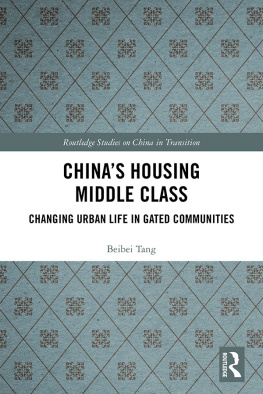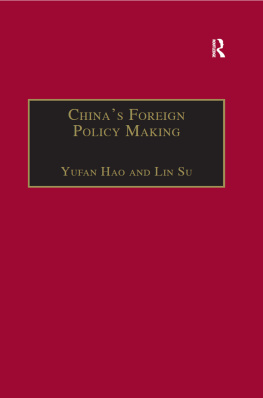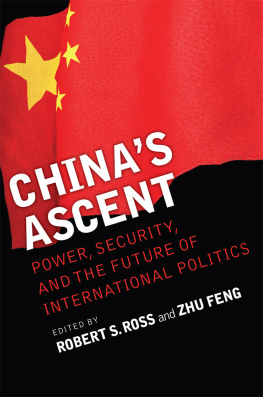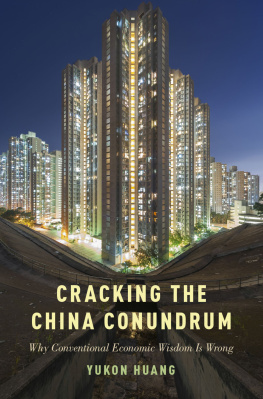SHOPPING MALLS AND PUBLIC SPACE IN MODERN CHINA
Shopping Malls and Public Space in Modern China
Nicholas Jewell
Associate Director, Ben Adams Architects
and Tutor, Queen Mary University, London, England
ASHGATE
Nicholas Jewell 2015
All rights reserved. No part of this publication may be reproduced, stored in a retrieval system or transmitted in any form or by any means, electronic, mechanical, photocopying, recording or otherwise without the prior permission of the publisher.
Nicholas Jewell has asserted his right under the Copyright, Designs and Patents Act, 1988, to be identified as the author of this work.
Published by
Ashgate Publishing Limited
Wey Court East
Union Road
Burlington, VT 05401-3818
Surrey, GU9 7PT
England
Ashgate Publishing Company
110 Cherry Street
Suite 3-1
Burlington, VT 05401-3818
USA
www.ashgate.com
British Library Cataloguing in Publication Data
A catalogue record for this book is available from the British Library.
Library of Congress Cataloging-in-Publication Data
Jewell, Nicholas.
Shopping malls and public space in modern China / By Nicholas Jewell.
pages cm
Includes bibliographical references and index.
ISBN 978-1-4724-5611-3 (hbk) -- ISBN 978-1-4724-5612-0 (ebook) -- ISBN 978-1-4724-5613-7 (epub) 1. Shopping malls--China. 2. Public spaces--China. 3. Shopping centers--China--Planning. 4. Social change--China. I. Title.
HF5430.6.C6J494 2015
381.110951--dc23
2015011065
ISBN: 9781472456113 (hbk)
ISBN: 9781472456120 (ebk-PDF)
ISBN: 9781472456137 (ebk-ePUB)
List of Illustrations
1 A Brief History of Malls
2 Eastern Promises
3 A New Breed
4 The Rub
5 A New Day
6 The City Reified
7 The Bleed
8 Going Down to Chinatown
9 Conclusion
Acknowledgements
A great number of people have helped me in so many ways over the lifespan of this work. First and foremost, none of this would have been possible without the help of Murray Fraser who supervised the PhD from which this book has been developed. His advice, friendship and support have continually gone above and beyond the needs of tuition.
I would also like to thank Adrian Forty, Ben Stringer, Adam Eldridge and Harriet Evans whose input has played a hugely important role in the life of this work. Similarly, I would like to thank Kim Dovey and Fulong Wu who contributed generous and enlightening observations that have helped to shape this book into its final form.
Sven Steiner was instrumental in persuading me that this was an endeavour worth undertaking and, along with his colleagues at Spark Architects Jan Felix Closterman, Mingyin Tan, Kamilla Czegi and Sophia David provided great hospitality and a number of key insights during my fieldwork China. Similarly, Conn Yuen was indispensable during my time in Hong Kong, while Stephen Cairns, Lillian Chee and Widari Bahrin ensured a memorable stay in Singapore. Zhang Jie, Jianfei Zhu, Simon Blore, Damienne Joly Hung, Paul Sutliff and Chris Hacking were all generous with their time and insights.
This work has been conducted in parallel with my other life as a practising architect and, as such, I must thank Ben Adams Architects for their support and understanding over its lifespan particularly during the final stages.
Many friends and colleagues have provided support by commenting on sections of text, providing ideas, or simply being around for support when the going got tough. I would like to thank: Lincoln Andrews, Stephen Bell, Eva Branscome, Alex Dowdeswell, Kim Gilchrist, Patrick Hammond, Julia Hamson, Ian and Lucy Hannent, Lucas Hewett, Ali Higgins, Craig Hutchinson, Kate Jordan, Michael Wilson Katsibas, Kayvahn Kavoussi, Amy McCarthy, Richard McCarthy, Alastair and Helen Pope, Andy and Colette Reader, Maeve Rutten, Patrick Seymour, Ajay Sood, Anna Steinberg, Neil Sterling, Marisa Wheatley, Kielan Yarrow and Colleen Yuen. I would also like to say particular thanks to Sophie Steed who walked many miles and read many words.
Above all I must thank those that are the centre of my world Sara, Mum, Ben, Bella, Oliver and my grandfather Geoffrey. Your love and support has been with me every step of the way.
My grandmother Irene, my uncle Malcolm and my aunt Tina were lost along the way and are terribly missed.
Finally, I would like to dedicate this book to the memory of my father, Paul William Seymour Jewell, with whom I shared more beautiful memories than I could ever put into words.
Introduction
THE ELEPHANT IN THE ROOM
Do you like shopping malls? I have encountered this question more than any other over the course of writing this book. It is one that I would like you to ask yourself also. How do you define your relationship with the shopping mall? For my interrogators I suspect that their line of enquiry was a cunning ruse, a way to navigate straight to the big revelation and avoid the turgid explanations in between. Moreover, this question cuts to the nub of the love-hate relationship between modernity and the shopping mall. Who can deny the convenience of the mall and its ubiquity in everyday life? But who, in the rarefied fields of architecture and academia, truly loves it?
I have no desire to make you wait for a denouement that will disappoint. The answer, at its most fundamental level, is no, I dont really like shopping malls. As an architect, any latent joie de vivre associated with being in a shopping mall has been bludgeoned into oblivion by seven years of training in the art of wearing black and the correct use of right angles. Consumption and capitalism contrast starkly with the quasi-socialist value system that generally informs architectures agenda of good intentions. You may ask what kind of perverse imagination would taunt itself for half a decade by studying an object of architectural derision. My answer is that I find the shopping mall genuinely interesting because, as an architectural form, it is so problematic. It asks architecture questions that the profession would prefer to ignore.
Life is of course rarely black or white. Yet the relationship between the architectural profession and the shopping mall has been polarized along such lines for half a century. A high-low cultural divide is commonly acknowledged throughout the profession. High cultural institutions and one-off showpieces conventionally occupy the oeuvre of architectures great and good. From there, it is a slippery slope into a morass of commercially oriented building ventures. And then the shopping mall appears to occupy the landfill at the very bottom. As a result the typology, for architects at least, has found itself in a catch-22 scenario. If opposed
Broader theoretical enquiries into urban morphologies and power structures have yielded more interesting perspectives on the shopping mall.
Pertinent or impertinent as they may be, these academic enquiries deal with a particular historical condition. They explore the shopping mall as an essentially suburban entity. As such, it is seen as having provided a focused hub of amenity in the sprawl of post-war suburban growth. As a result of its autonomous form in this setting, the shopping mall has been naively likened to a modern-day agora, or to a cathedral of consumption. Such analogies speak of a place for the people. But the business of selling has a tendency to strip the people of all but their most immanently empirical characteristics. In this way the shopping mall separates itself from forbearers that occupy more conventional histories. Its agora is blighted by aporia.
Next page






